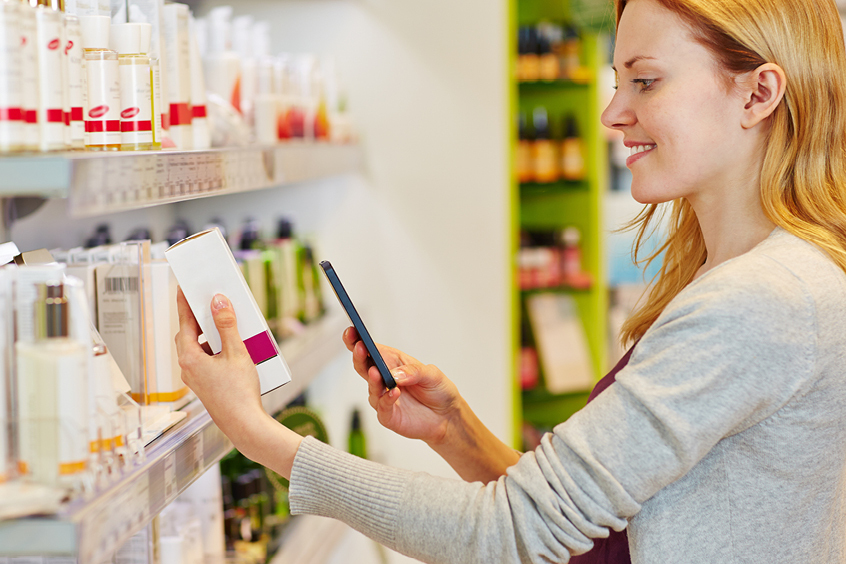
Over the past few years, supply chain issues and delays, rising costs, and reconfiguring business models have all led to disruption within the consumer packaged goods (CPG) industry. As the CPG market continues to grow and companies find new audiences while strengthening relationships with existing customers, a firm grasp on current CPG trends can set brands up for the next stage of growth.
Understanding consumer behavior is crucial in this dynamic market, with accessibility in the digital age creating a sense of immediacy and transparency that consumers not only want but expect from brands today. Especially with the rise of social media, particularly TikTok, driving sales and attracting new, high-buying audiences, it’s up to companies to stay on top of trends in order to maintain brand awareness and competitive positioning.
Gen Z will soon outpace Millennials as the top consumer market, and brands must shift their strategies to cater to this tech-savvy audience. This new generation of consumers expects quality, convenience, and customization in equal measure, which means every CPG brand must work extra hard to capture and maintain their attention, understanding consumer needs, and responding to them effectively.
Here are five CPG industry trends companies need to consider working into their current strategies as they shift to accommodate the current market and consumer demand.
1. Addressing environmentally conscious consumers
Today’s consumer preferences revolve around wanting to buy from brands that align with their values. This involves knowing how products are made and packaged, as well as how companies protect their employees, the environment, and the community as a whole.
Younger generations are influenced by a brand’s ESG (environmental, social, governance) factor. Over two-thirds of surveyed consumers said at least one aspect of ESG factors played a part in their purchasing behavior. And, on a global level, 60% of consumers rate sustainability as a main criterion. Therefore, it’s in CPG manufacturers’ best interest to think through its initiatives and be willing to share data regarding product freshness, safety, environmental effects, and effects on labor.
Sustainability-based CPG consumer trends include greater use of natural resources and working with suppliers that also adhere to environmental best practices; reimagining packaging to cut down on waste; and giving back to the community through recycling and/or repurposing programs.
Any uncertainty about where a brand stands and lack of information sharing how their products are made and distributed leave consumers looking elsewhere to get what they need. Though there are outlier situations, by and large, the new generation is making sustainability a priority for future purchases.
2. Elevating online experiences
Nearly 75% of consumers are shopping and engaging with brands online , with that number expected to reach over 80% by 2025. However, with so much online content readily available, it’s easy for people to scroll by ads that don’t speak to their specific consumer needs or from brands they’re unfamiliar with.
Brands that take time to customize their product offerings and CPG marketing efforts toward their audience are more likely to succeed. According to a Deloitte survey, 50% of surveyed companies believe consumers lose trust in brands that don’t engage in a personalized way. Technology trends in the CPG industry include introducing ecommerce fulfillment platforms, which can help retail and consumer packaged goods brands successfully meet their fulfillment needs, especially when holiday ecommerce season is in full swing.
Flowspace allows brands to access valuable consumer insights, from product trends to customer lifetime value, which helps to optimize the CPG supply chain and respond in ways that align with what customers really want. Making data-driven decisions is invaluable as brand loyalty is harder to come by. Research shows that 90% of consumers who have switched brands in the past few years plan to continue seeking out what they need when they need it, regardless of previous buying behavior.
Reasons for lackluster loyalty are largely due to changes in price and convenience. When one brand spikes in price, consumers know they can typically find a similar product for less elsewhere. The same concept applies to convenience. If a consumer can’t get a product in the time they want, it’s easy for them to turn to the next best option.
With Flowspace fulfillment technology, brands have access to real-time visibility of inventory levels across all buying channels to stay ahead of low inventory and forecast seasonal spikes in sales. This ensures that when consumers are ready to buy, there are no limitations from the logistics side to slow down sales.
3. Adjusting to the new customer journey
The customer journey has caused CPG industry trends to shift dramatically, especially over the past two years. Online retail spending was arguably the biggest area of growth due to brick-and-mortar store shutdowns. However, CPG ecommerce trends continued into 2021, with online sales for U.S. retail increasing 40% year over year and 75% of consumers researching product availability both online and through brick-and-mortar stores.
Consumers want flexibility and variety when it comes to when and how they shop. Brands that have historically been solely brick-and-mortar have found new ways to meet customer needs by incorporating ecommerce more heavily into their sales strategies. Omnichannel commerce fulfillment and social commerce continue to expand, with projections of sales through social media reaching approximately $80 billion, doubling growth from 2021 to 2025.
Before jumping on any social media trend, brands must look at their unique customer data and customize accordingly. The linear path to purchase is a thing of the past, and organizations must create a flexible operational structure that integrates all marketplaces and storefronts in one place to see exactly what’s working and what’s not. Flowspace software provides real-time visibility of buying behavior, inventory management, and other metrics across all integrated marketplaces and storefronts.
Artificial intelligence and fulfillment software is invaluable to streamlining operations; however, there must be a clearly defined strategy for how to define the system and use the information to support day-to-day decision-making. Automation can only do so much. Ensuring customer satisfaction still requires a human touch.
4. Focusing on first-party data
Offering same-day or next-day delivery used to be a novel concept. As more brands extend their capabilities to offer the same conveniences, brands must find something new to set them apart. That’s where personalization comes into play. Whether it’s by following CPG packaging trends like QR codes, unique branding, subscription box assembly, or updating inventory based on customer buying behavior, brands must be able to seamlessly pivot to meet consumer demand.
Brands must also take a look at metrics like cart abandonment, browsing behavior, and other data points along the customer journey to truly understand when and why customers decide to make a purchase. With Google planning to eliminate third-party cookies, CPG brands must hone in on their first-party data efforts. First-party data is invaluable as it gives companies direct insight into consumer behavior and CPG trends.
CPGs can set up workflows that speak directly to customers directly and entice them back to a store, website, or social media channel and continue to engage them post-purchase. Regularly evaluating data to create truly personalized experiences is what will keep customers loyal and allow companies to evolve with their changing needs and demands.
Without an investment in software that provides in-depth analytics, CPG brands are lost trying to navigate exactly what consumers want and often spend wasted dollars and resources trying to capture their attention.
5. Optimizing supply chain operations
Disruptions to the supply chain are one of the biggest challenges CPG brands continue to face, especially as it pertains to optimizing peak season supply chain operations. Seeking out areas of improvement will keep brands successful and on pace with the next trend. In order to solidify supply operations, leaders must create flexibility in the process. There are several best practices to apply in order to create a foundation to rely on long-term.
Implement demand forecasting
In addition to evaluating day-to-day metrics, brands can use technology and historic data to implement demand forecasting. This helps to prevent stockouts, and prepare for delays caused by weather, recalls, pandemics, and anything else that pops up. Essentially, it allows brands to take a more proactive approach to the supply and demand of their organization and have plans in place when there are delays in the supply chain.
Prioritize proactive customer service
Increased visibility of logistics from start to finish allows customer service teams to proactively connect with consumers when packages are lost or delayed. When there is a surge in demand or problems with a supplier, it provides transparency for customers ahead of time and offers a solution. When customers have insight into when their purchase has been packaged and ready for shipment and can track it along its pathway, it provides greater assurance they’ll receive it on time and intact.
Optimize SKU availability
Strategizing about product selection will also help CPG brands optimize costs and speak to consumer demands with more accuracy. Reviewing data that shows which products sell best, as well as which are most often sold together, can help brands make proper inventory allocation decisions. This is also important when evaluating available materials and suppliers. As demand continues to increase, where and how can brands free up storage space and continue with on-time shipping of products consumers actually want.
Leveraging Flowspace Capabilities
Implementing Flowspace software enables CPG companies to get ahead of industry trends and plan for the future of online retail. With specialty services in several CPG categories, Flowspace is equipped to handle any fulfillment request or need, including FDA-compliant storage and lot tracking and reporting, DTC, and retail fulfillment solutions, and capacity to handle items of any size, shape, or weight. All operations are housed in a single dashboard to provide the visibility and control brands need to make real-time decisions and accurately forecast projections.
The CPG industry is constantly evolving. Fulfillment software from Flowspace empowers brand operators with the data they need to make decisions that will keep them relevant for this next generation of shoppers and beyond.
Sources:
- McKinsey. How U.S. consumers are feeling, shopping, and spending and what it means for companies. https://www.mckinsey.com/business-functions/growth-marketing-and-sales/our-insights/how-us-consumers-are-feeling-shopping-and-spending-and-what-it-means-for-companies
- Businesswire. Recent Study Reveals More Than a Third of Global Consumers Are Willing to Pay More for Sustainability as Demand Grows for Environmentally-Friendly Alternatives. https://www.businesswire.com/news/home/20211014005090/en/Recent-Study-Reveals-More-Than-a-Third-of-Global-Consumers-Are-Willing-to-Pay-More-for-Sustainability-as-Demand-Grows-for-Environmentally-Friendly-Alternatives
- Statista. eCommerce. https://www.statista.com/outlook/dmo/ecommerce/united-states
- Deloitte. 2022 Consumer Products Industry Outlook. https://www2.deloitte.com/us/en/pages/consumer-business/articles/consumer-products-industry-outlook.html
- McKinsey. Profitable e-commerce growth in consumer goods. https://www.mckinsey.com/industries/consumer-packaged-goods/our-insights/e-commerce-at-the-center-of-profitable-growth-in-consumer-goods
- The Future of Customer Engagement and Experience. CPG Industry Trends: 2022 Requires Agility and Adaptability. https://www.the-future-of-commerce.com/2021/11/29/cpg-industry-trends-2022/
- McKinsey. Ensuring high service levels to meet high consumer-demand volatility. https://www.mckinsey.com/industries/consumer-packaged-goods/our-insights/ensuring-high-service-levels-to-meet-high-consumer-demand-volatility





